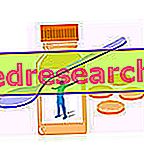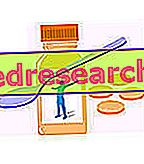Symptoms

The most common symptoms of anemia during pregnancy are:
- Feeling tired or weak (very common);
- Progressive pallor of skin, lips and nails;
- Headache;
- Dizziness;
- Numbness of hands and feet;
- Low body temperature;
- Shortness of breath (slight dyspnea during exertion);
- Rapid heart beat (tachycardia) or irregular;
- Difficulty concentrating;
- Chest pain;
- Irritability.
Risks associated with anemia in pregnancy
During pregnancy, severe or untreated iron deficiency anemia may increase the risk of:
- Preterm or low birth weight infant;
- Need for blood transfusions (if a significant amount of blood is lost during childbirth);
- Postpartum infections;
- Postpartum depression;
Furthermore, the child may suffer from anemia during childhood and, in the most serious cases, may present constitutional or cerebral growth retardation.
Untreated folate and vitamin B12 deficiencies can increase the risk of having a:
- Preterm or low birth weight infant;
- Child with birth defects, especially in the spine or brain (neural tube defects).
Diagnosis
The diagnosis is based on the presence of typical clinical symptoms of anemia and on the outcome of laboratory investigations.
During the first prenatal examination, the doctor can check whether the future mother suffers from anemia by a blood test.
The diagnosis begins with a complete blood count (CBC, Complete Blood Count).
The following parameters are determined with the blood count:
- Hematocrit value (Htc): measures the percentage of plasma volume occupied by erythrocytes and is generally decreased in the evaluation of a possible anemic state;
- Serum iron (indicates iron deficiency) and serum ferritin (indicates the amount of iron deposits in the body, if less than 10 mg / L requires treatment): to check the availability of iron in the body.
- MCV (Mean Corpuscolar Volume): indicates the size of red blood cells, highlighting whether these are smaller than normal (microcytic anemia) or larger (macrocytic anemia).
The evaluation can also include:
- Hemoglobin electrophoresis;
- Measurement of B12 and folate levels in serum.
Even when anemia is not detected early in pregnancy, your doctor may recommend subsequent blood tests to check for anemia in the second or third trimester of pregnancy .
Criteria for defining anemia in specific stages of pregnancy:
| Quarter | Hemoglobin (g / dl) | Hematocrit (%) |
First | <11 | <33 |
Second | <10.5 | <32 |
Third | <11 | <33 |
- In normal conditions, every woman who has a hemoglobin concentration (Hb) lower than 12 g / dl is considered anemic;
- During pregnancy, the diagnosis of anemia arises on the basis of Hb values <10 g / dl (and hematocrit, Htc <30%);
- If at the beginning of pregnancy the Hb is less than 11.5 g / dL, women can undergo prophylaxis, since the subsequent haemodilution tends to reduce, usually, the Hb value below 10 g / dL.
- NOTE: the lower normality limits may vary slightly from laboratory to laboratory; furthermore, to be able to talk about anemia proper, it is important to evaluate the overall results of the blood test, crossing the values of several blood indices
Treatment
The main goal of treatment is to reverse anemia.
A balanced diet is generally sufficient to guarantee the intake of iron and other nutrients. Your doctor may also recommend enriching your diet with foods high in iron, vitamin B12 and folic acid, such as:
- meat (especially red);
- eggs;
- fish (in particular: tuna, sardines and cod) NOT raw;
- legumes (beans, lentils, etc.);
- cereals;
- green leafy vegetables;
- dairy products.
Food of animal origin contains iron that is more easily assimilated by the body than vegetables. Iron absorption increases when combined with foods rich in vitamin C (example: citrus fruits, kiwi ...) When, on the other hand, severe anemia is linked to different factors, not associated with nutritional deficiencies, it is necessary to resort to iron and / or folic acid supplements, as well as prenatal vitamins to complement the diet. Oral therapy is the first line of treatment: prophylaxis with low doses of iron, associated with folate is recommended. These supplements can cause some unwanted effects: heartburn, heaviness, constipation or, on the contrary, intestinal hypermotility. In these cases, it is advisable to take them on a full stomach to mitigate the ailments (even if this could reduce the absorption of the active ingredients) and always inform the doctor about any discomfort felt. Even to treat vitamin B12 deficiency, your doctor may advise you to take a supplement.
Transfusion is indicated for any anemia associated with serious constitutional or cardiopulmonary symptoms (eg, dyspnea, tachycardia, tachypnea).
After a certain period of time, the patient is invited to undergo another blood test to assess whether hemoglobin levels and hematocrit have improved. The same check is indicated 4-6 weeks after birth.
Prevention
How to prevent anemia in pregnancy
Good nutrition is the best way to prevent anemia in case of pregnancy or when trying to get pregnant. Eating foods that are high in iron (such as green leafy vegetables, red meat, fortified cereals, eggs and peanuts) can help ensure the body's needs to function properly. The doctor may also prescribe vitamins to ensure that the patient has sufficient intake of folic acid, vitamin B12 and other nutrients.



